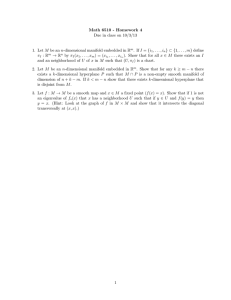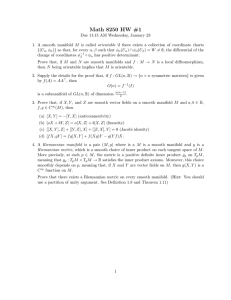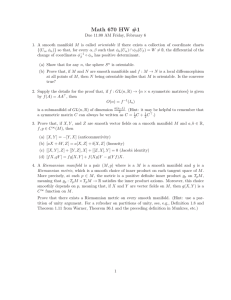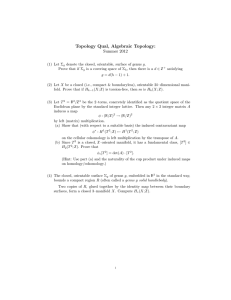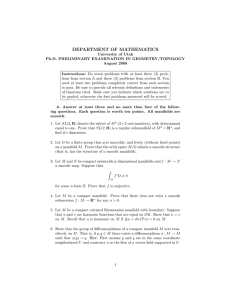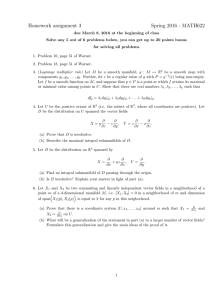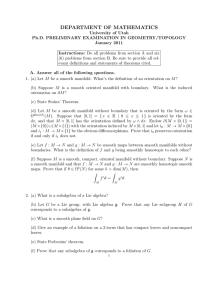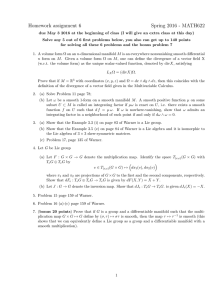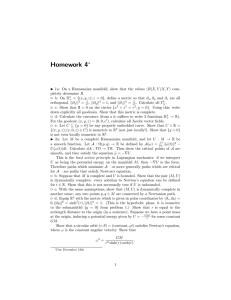18.755 Problem Set 3 due 9/28/15 in class
advertisement
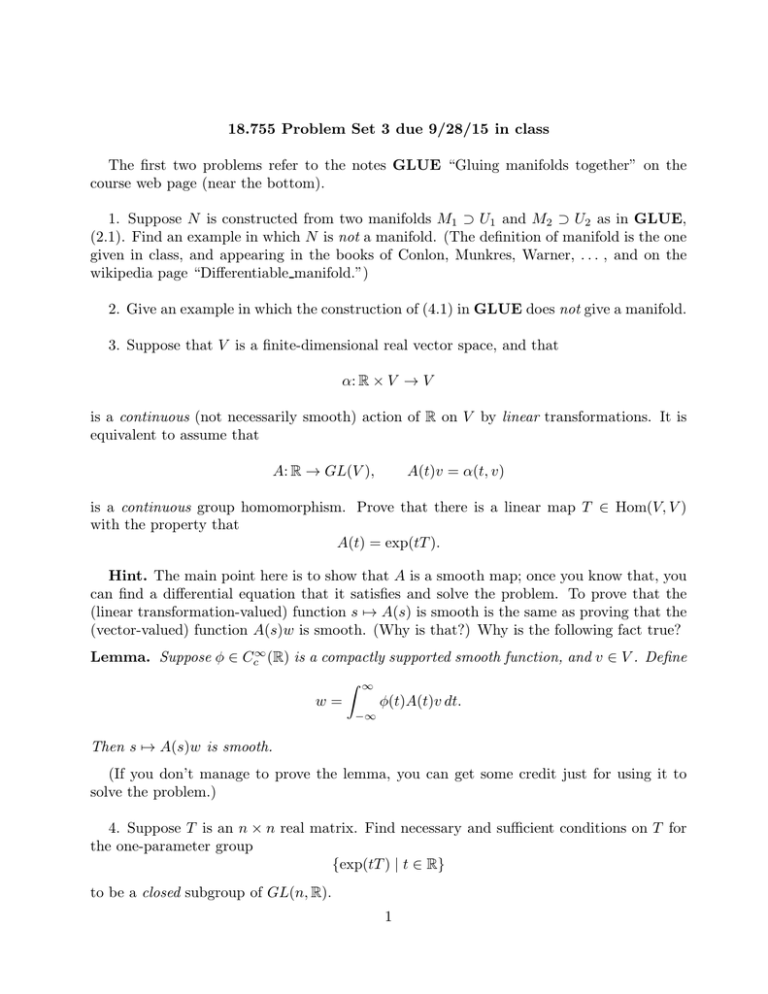
18.755 Problem Set 3 due 9/28/15 in class
The first two problems refer to the notes GLUE “Gluing manifolds together” on the
course web page (near the bottom).
1. Suppose N is constructed from two manifolds M1 ⊃ U1 and M2 ⊃ U2 as in GLUE,
(2.1). Find an example in which N is not a manifold. (The definition of manifold is the one
given in class, and appearing in the books of Conlon, Munkres, Warner, . . . , and on the
wikipedia page “Differentiable manifold.”)
2. Give an example in which the construction of (4.1) in GLUE does not give a manifold.
3. Suppose that V is a finite-dimensional real vector space, and that
α: R × V → V
is a continuous (not necessarily smooth) action of R on V by linear transformations. It is
equivalent to assume that
A: R → GL(V ),
A(t)v = α(t, v)
is a continuous group homomorphism. Prove that there is a linear map T ∈ Hom(V, V )
with the property that
A(t) = exp(tT ).
Hint. The main point here is to show that A is a smooth map; once you know that, you
can find a differential equation that it satisfies and solve the problem. To prove that the
(linear transformation-valued) function s 7→ A(s) is smooth is the same as proving that the
(vector-valued) function A(s)w is smooth. (Why is that?) Why is the following fact true?
Lemma. Suppose φ ∈ Cc∞ (R) is a compactly supported smooth function, and v ∈ V . Define
w=
Z
∞
φ(t)A(t)v dt.
−∞
Then s 7→ A(s)w is smooth.
(If you don’t manage to prove the lemma, you can get some credit just for using it to
solve the problem.)
4. Suppose T is an n × n real matrix. Find necessary and sufficient conditions on T for
the one-parameter group
{exp(tT ) | t ∈ R}
to be a closed subgroup of GL(n, R).
1
